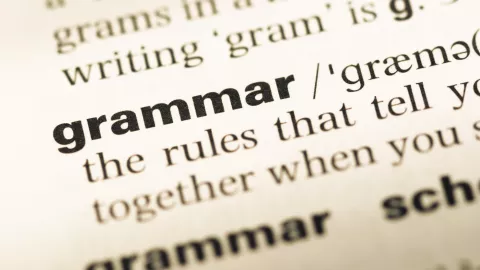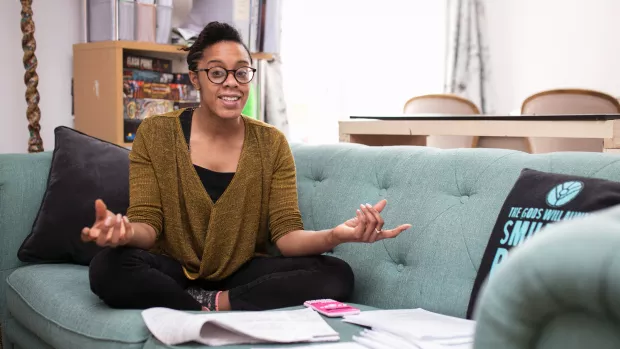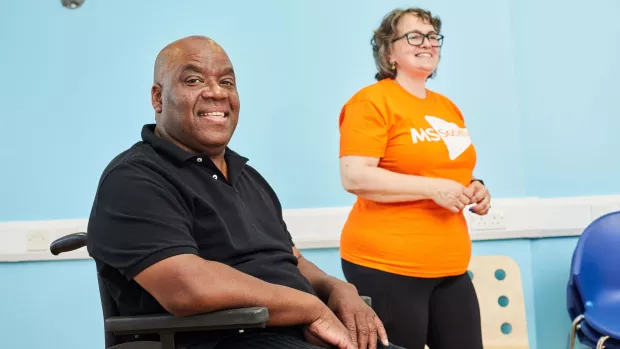
Grammar, punctuation and formatting
Our style guidelines allow for clear, accurate writing for accessibility and clarity.
Grammar
Apostrophes
Use apostrophes to show possession. For example: The car belongs to the GP. = It is the GP’s car. Where you put the apostrophe depends on whether the word is singular or plural. For example: The GPs owned the practice. = It was the GPs’ practice.
Contractions (isn’t, won’t)
One of the principles of our tone of voice is we always try to speak like a real person. So we write using contractions we’d use in speech, like won’t, isn’t, can’t, he’s, they’ve shouldn’t’ve. Some grammar checks will flag this as informal - which is fine. Our tone of voice is warm.
Conjunctions (if, but, so)
You can use words like If, But or So to start a sentence when it makes something clearer and easier to read. Sometimes.
Punctuation
We use punctuation to make our writing clearer and more accessible for our readers. We avoid unnecessary punctuation and long sentences. Your sentences should contain one idea, two max. They should be no longer than 15-20 words.
Commas
Use commas to separate words in a list of items. You only need a comma before the final ‘and’ if the meaning would be unclear without it.
Semicolons
We don’t use semicolons as they make people think about your punctuation not what you’ve written. Instead, if you’re struggling with a long phrase, try to break it down into shorter sentences.
Colons
A colon shows that what comes after it helps explain what goes before it. You can also introduce a list of items with a colon. For example:
- There are three countries in Scandinavia: Denmark, Norway and Sweden.
- After a few weeks together, Sarah came to her conclusion: Robert wasn’t exciting enough for her.
Hyphens
If a word reads easily without a hyphen, leave it out. For example, coordination is as clear as co-ordination. Some words that are easier to read with hyphens include:
- co-production
- neuro-physiotherapy
- neuro-psychiatry
- neuro-rehabilitation
- multi-disciplinary
Do hyphenate two words that come in front of a word to modify it, like long-term conditions, or post-natal depression.
But don’t hyphenate words when they’re acting as nouns or verbs. So, hyphenate day-to-day treatment, but not how things happen day to day.
Dashes
Dashes are longer than hyphens. You can use a single dash to -
- introduce a list
- introduce an explanation
Ampersand (&)
We don’t use ampersands (&) unless they’re part of a brand, like Proctor & Gamble.
Backslash (/)
- Avoid backslashes, especially in free-flowing text where they can needlessly/ pointlessly slow the reader down (see what we did there?)
- We avoid ‘he/ she’ (‘they’ works just as well)
- We avoid and/or (‘or’ usually means the same thing)
- If you do find you need to include a few options, use ‘or’
Bullets and numbered lists
- If a list of bullet points complete the sentence they come after, each one should start lowercase
- If each bullet is its own point and isn’t completing a sentence, they start with a capital letter (like in this set of bullets). We avoid unnecessary punctuation. So unless you’re starting and finishing sentences within a bullet, there’s no need to add full stops to each one
- If you’re not sure, the most important thing is to be consistent within a set of bullets and throughout your document
- Only number lists if they’re in order of importance, or they show the order you need to carry out the tasks in the list in
Brackets
We use round brackets to add extra context to sentences. For example: Some people may go into remission (a period of recovery). We use square brackets within a direct quote to explain something that is missing. Example “It [NICE] is overly cautious in my opinion,” said the consultant.
Exclamation marks
We try not to use a lot of exclamation marks. We show excitement, surprise or joy with our words instead. Sometimes a full stop can carry greater emphasis.
Quote marks
Use double quote marks for direct speech, single for passages from books, reports or letters. For example: Ed Holloway said “We need more research.”
When we quote someone who’s quoting someone else, we use single quote marks: The man said “They told me I should ‘look elsewhere’ for that kind of support.”
We close quotes after a comma or full stop in a complete sentence. But before the punctuation if they are not complete sentences.
Formatting
Abbreviations and acronyms
Spelling it out
Always spell out abbreviations or acronyms in full the first time you use them, followed with the abbreviation or acronym in brackets. Then we can use the abbreviation or acronym for the rest of the document. For example: Everyone who can take a disease modifying therapy (DMT) should talk to their MS team to decide which DMT is best for them.
Abbreviations we break this rule for include: MS for multiple sclerosis, NHS for national health service, and MRI for magnetic resonance imaging.
Latin abbreviations and phrases
We don’t use full stops in abbreviations. So for example we’d write MRI not M.R.I
We don’t use Latin abbreviations and phrases like: eg, ie, etc, via, vice versa.
Instead we write for example, that is, and so on, through. Or change the sentence so it doesn’t rely on the Latin. We do this to avoid confusing people who have English as a second language by introducing another language.
Using formatting for emphasis
Bold print
Bold is okay – but a little bit of it. We bold words we want our readers to see, but don’t use it too much or it loses its impact.
Underlining
We don’t use underlining for emphasis. We do use underline to show when text is hyperlinked.
Italics
We don’t use italics as they’re not accessible for people who have problems with vision and cognition. The only exception to this rule is in some academic referencing systems where the title of a publication has to be in italics.
Headings and text blocks
We justify all headings and text blocks left. We never justify both sides of text as it can make it hard to read.
We always write headlines without capitalising words that wouldn’t normally be capitalised (also called ‘sentence case’).
Capital letters
We don’t write full words in capitals – it LOOKS LIKE SHOUTING.
Capital letters
When people read text on a page or website, they don’t usually spell words out letter by letter, they recognise the shape of the whole word. Capital letters change the shape of words, so we don’t add them where we wouldn’t expect them.
- We don’t write full words in capitals.
- We write headlines and headings without adding extra capitals (in sentence case) as they’re easier to read.
- We don’t capitalise: multiple sclerosis, types of MS, like progressive MS or relapsing MS, generic drug names like ocrelizumab - but branded products usually take capitals, like Ocrevus, central nervous system, magnetic resonance imaging, disease modifying therapies, local authority, social care services, social welfare departments
Government
If we refer specifically to ‘the UK Government’ (for example ‘when the UK Government decides a policy’), we use a capital ‘G’.
If we’re talking about government in general (Example ‘national and local government’), or as an adjective (Example ‘many government departments’), we use a lowercase ‘g’.



